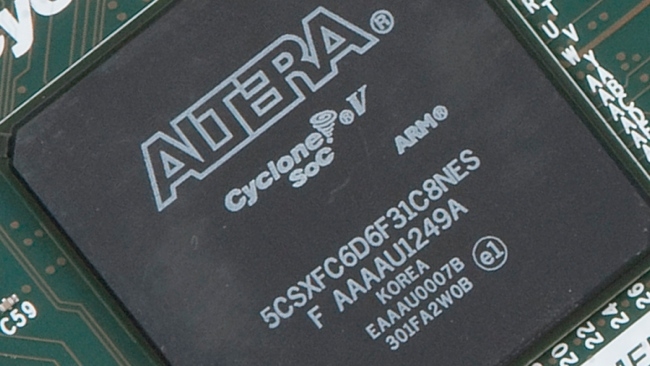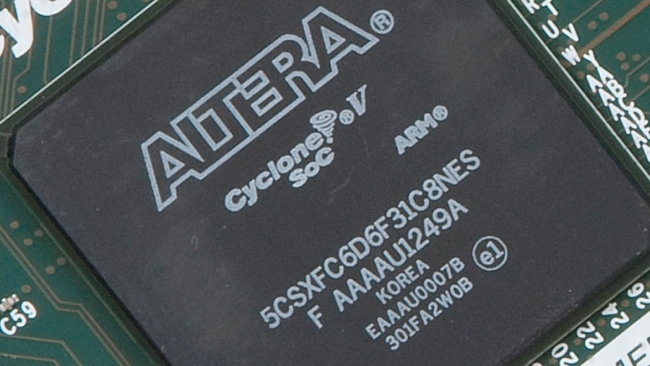
 12G
12G
Watching glorious, detailed, pristine 4K images is one thing, but how do you get them to your screen? What is - or is going to be - the standard way for moving 4K around?
It's not as easy as it sounds, and, actually, it doesn't sound easy.
Consumers can breath a sigh of relief because HDMI 2.0 has just been announced. This will no doubt become ubiquitous over the next few years as new equipment that supports it rolls out. The big advantage of HDMI 2.0 is that it can handle frame rates higher than 24 fps. For sport, 60 fps is pretty much essential, even though at 60 fps it is around ten times the data rate of 1080p at 30 fps (although this doesn't actually exist as a broadcast standard - you're far more likely to see 1080i at 30 fps, or 720p at 60 fps).
But you won't find HDMI much in broadcast facilities. So how are they going to manage?
Well, in the short term, "Pragmatically" is the answer. They're going to use multiple SDI cables: four, eight or even more. The impressive NHK demonstration of "Super Hi Vision" or 8K video at the recent IBC show in Amsterdam was courtesy of no less than sixteen SDI cables, all connected to the back of a single 8K monitor.
SDI is a good way to go, but multiple cables are ungainly and make for a difficult plugging-in process.
Another option is to use SDI and to simply speed it up.
Very broadly, a single SDI connection gives you up to 1.5 Gbit/s bandwidth. That's enough for a single 1080i signal. 1080p requires twice that, and this data rate is already available in the form of "3G" SDI. You can just about squeeze a 30fps 4K signal down 6G SDI, and for higher frame rates, you need (without too much need for wild speculation) 12G.
6G is real
6G is a real thing. With considerable foresight, Blackmagic have equipped a wide range of their live production products with 6G SDI so they're 4K compatible out of the box.
The thing is that you can't just crank up the speed of the electronics to give you 12G without changing anything else - any more than you could increase the maximum revs of your car's engine by a factor of 12. It wouldn't work, and on the way, it would blow up.
But, despite this, it's beginning to look like 12G SDI is on the way. In a recent press release, Altera, the company that makes the FPGA chips that power devices like the Atomos Ninja, mentioned that it was working with aTexas Instruments reclocker chip to make 12G a reality. If they do, that's pretty good news for broadcasters.
The only thing that might compete with 12G in the professional space is plain, simple Ethernet. Both Sony and the BBC have talked recently about a possible move to a generic IT infrastructure, although pushing 12 gigabits through a standard network cable is going to be a challenge: 10 Gigabit connections are becoming more routine, but 4K at high frame rates over an IP connection might have to wait for the next generation of Ethernet. Two speeds are proposed: 40 Gbit/s and 100 Gbit/s, of which the first of these might be a good compromise between speed and range: these very high data rates can't travel far down copper cables (around 30m over "Cat.8" twisted pair) but can travel for several kilometres with the right type of fibre.
See Altera's IBC press release after the break
Altera Demonstrates Broadcast Solutions at IBC 2013 Altera and Texas Instruments Showcase Industry’s First 12G Serial Digital Interface That Doubles Transmission Rates for 4K Video Broadcast Systems Amsterdam, IBC 2013 Conference -- Sept. 10, 2013—Altera Corporation (NASDAQ: ALTR) is sharing its latest innovations in programmable logic devices for diverse broadcast end-market applications at IBC 2013 in Amsterdam from September 13 to 17. Altera is demonstrating how its field programmable gate arrays (FPGAs) can help the broadcast industry achieve the highest levels of performance and systems integration at the lowest power for High Definition (HD) and beyond. Altera is in Hall 10, Stand #10.A10 where engineering experts will demonstrate the following innovations: Improving video quality and lowering bit rates with hardware-accelerated High Efficiency Video Coding (HEVC), a video compression standard also known as H.265 4K60 transport over existing 3G serial digital interface (SDI) using TICO – a visually lossless, low latency and compact compression solution from intoPIX, which can be used as a smart upgrade path to manage ultra-high-definition (UHD) resolution workflows and higher frame rates 4K UHD video processing that leverages Altera's edge-adaptive sharpening algorithms, downscaling from 4K or upscaling to 4K SMPTE 2022 video over 10G Ethernet for uncompressed video over IP, and increased channels with compressed video over a 1 Gbps network with JPEG2000 In addition, Altera and Texas Instruments are showcasing an industry-first 12G demo in the TI booth in Hall 11, Booth #G41. The demo shows how TI’s 12G UHD SDI reclocker, using an Altera Stratix® V GX FPGA device, doubles transmission rates over competing 6G devices, allowing broadcast video equipment to capture, record and play back 4K video signals at 60 Hz over a single link of coaxial cable. Altera FPGA technology helps manufacturers adopt the emerging 4K UHD standard, which delivers four times the image resolution compared to current 1080p HD video equipment. By enabling a screen display resolution of 3048 x 2160 pixels, 4K UHD presents video in much greater detail, offering a more immersive TV viewing experience. “Broadcast equipment manufacturers are increasingly required to deliver integrated products that provide more bandwidth and processing power, while minimizing cost and power, said Umar Mughal, senior manager for the Altera Broadcast business unit. “Altera offers 40 nm and 28 nm FPGAs tailored to deliver studio equipment developers higher integration and customization than ASSP-based systems, while avoiding the lengthy development times and costs of full custom ASICs.”
Tags: Technology


Comments